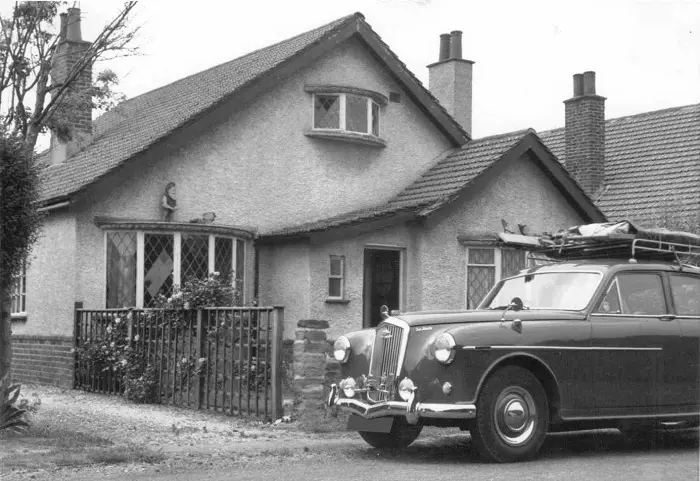The Wolseley 6/90 at 70
13 November 2024
“When Wolseley announce a new model there cannot be a more exciting expectation for that very typical Englishman, the man who likes his motor-car to be, in all things – in performance no less than appearance – exhilarating, discrete and distinguished.” When the British Motor Corporation introduced the Wolseley 6/90 at the 1954 London Motor Show, it wanted showgoers to be in no doubt that here was a car of true distinction.

BMC continued with this theme of social prestige or, if you prefer, blatant snobbery throughout 6/90 production. “It opens doors,” stated one PR campaign, as the Wolseley flagship was “a most sought-after car by the busy and ambitious man of affairs”. Another claimed: “Wolseley cars have always anticipated the needs of the best type of car owner. Wolseley success has been built upon the confidence of such men, for character reacts to character, and success attracts the successful.”
Best of all:
A man whose opinion and judgement are winning him an increasingly important place in the counsels of his associates cannot choose his car quite as others do. For him it must be more than the means of transportation: it must possess the distinction and carry the prestige befitting his position.
In other words, you must drive a Wolseley 6/90, instead of a Ford Zephyr-Zodiac or Vauxhall Cresta. Otherwise, your neighbours might regard you as a complete spiv.
Few cars could live up to such hyperbole, but the 6/90 was a rather splendid vehicle. The Gerald Palmer styling was beautifully understated, and another selling point was the six-cylinder 2,639cc BMC C-Series engine. In appearance, it resembled the Pathfinder, but the only common panels were the front doors, boot lid and main body shell.
By 1955, the 6/90 was available with overdrive, but in that year Autocar published a test that caused a stir at BMC’s head office. Their report stated the latest Wolseley would “surely be welcomed in spite of several points which justify criticism but which, no doubt, will be eliminated at an early date". The historian Anders Ditlev Clausager observed that, using these adverse comments as a pretext, “BMC’s mercurial chairman Leonard Lord” sacked Palmer. This was “probably to clear the way for Issigonis’s return”.

Meanwhile, the Series II, introduced at the 1956 London Motor Show, had rear semi-elliptic suspension, modified front seating, a wood veneer fascia and a right-hand floor gear lever in place of a steering column gear change. Borg Warner transmission was now an optional extra, and Autocar regarded the 6/90 Automatic as “an aristocrat in behaviour and appearance”.
The 6/90 Series III of May 1957 featured a larger curved rear window, servo-assisted brakes and lower-geared steering. Jeffrey Bridges’s splendid 1958 model cost £1,276 7s new – over £200 cheaper than a Rover 90 P4. This represented excellent value for a car with a telescopic steering column, full instrumentation, fog lights, a cigar lighter and folding armrests. One nice touch is the courtesy lamps that only operated on the rear doors.
BMC also marketed the 6/90 as “a superior car for all police work”, and at one point 500 served with constabularies across the UK, most notably in London. As I once wrote in The Independent:
The Wolseley’s true domain was the British B-movie. In the days when Merton Park Studios would stage chases along Wimbledon High Street for one of their many crime films, the 6/90 was the police car of choice. Whether it was the Scotland Yard series starring charisma-free leading men in trilbies and trench coats or the groovier Edgar Wallace Mysteries with their Shadows-esque theme tunes, no second feature was complete without a black 6/90 arriving to apprehend the likes of Sydney Tafler, Michael Caine or a very young John Thaw. If the villains were using the regulation Mk VII Jaguar, a touch of under-cranking could make the big Wolseley appear to travel at 235 mph, the moustachioed stunt driver desperately gripping the wheel as it lurched around corners.
The 6/99 Farina replaced the 6/90 in July 1959, and Jeffrey’s Wolseley was registered in March 1958. His father acquired it in 1960 for £745, and Jeffrey learned to drive in the Wolseley in the mid-1970s. He became its custodian in 1984 and now takes pride in owning, to quote BMC, “the type of car in which one feels completely at ease”.
Clausager believes “Palmer’s departure from BMC was conceivably much to its later disadvantage.” It is tempting to envisage his developed range of 1960s Wolseley, Riley and MG saloons to compete with Jaguar, Rover, Triumph, Alfa Romeo, Lancia and Volvo. As it is, the 6/90 links the Nuffield- and BMC-eras of one of the UK’s most famous car marques. As well as providing such memorable cinematic moments as this:
With thanks to Jeffrey Bridges for his time and permission to use the images in this blog.
And thanks to: https://www.wolseleyregister.co.uk/
